Derbyshire contains parts of the Peak District National Park, the Pennine Range and the National Forest. Within its boundaries you can find 636m-high Kinder Scout, the rumbling Derwent River and a huge range of ancient monuments. The East Midlands county is also home to sleepy Church Flatts Farm at Coton in the Elms, the furthest point from the sea in Britain.
The scale and diversity of Derbyshire makes it one of the most exciting counties in England to explore on foot. There are hundreds of miles of footpaths to choose from, and you could pick just about any one of them for a great day out.
For a little inspiration, we've put together a list of our favourite walks in Derbyshire, each with its own walking route, map, distances and difficultly level. Happy hiking!
Discover more walks in Britain

Best walks in Derbyshire
Carsington Water
4 miles / 6.4km | 2.5 hours | easy

You can easily spend a full day at Carsington Water, a reservoir lying just outside the Peak District National Park near Ashbourne. Along with its Wildlife Centre there are four other bird hides, while the nearby Water Centre hires out bicycles and boats.
You can cycle the eight-mile perimeter of the reservoir or rent out paddleboards, rowing boats or sit-on-top kayaks for a lazy afternoon on the water.
Walking is the ultimate way to experience the reservoir’s wildlife. Carsington Water has hosted over 200 species of birds, along with butterflies, bees and insects. Explore the surrounding wildflower meadows, reedbeds, ponds and woodlands, taking on the role of wildlife detective with young ones. Hunt pondlife, spiders and minibeasts.
Calke Park
1.5 miles/1km | 1 hour | easy

There are few more memorable woodland walks than a springtime wander through a hazy, purple sea of bluebells, especially when the shimmering carpet has a stately house and 600 acres of glorious parkland as a backdrop.
Calke Abbey in Derbyshire is renowned for its display of bluebells, but before you set off, it’s worth checking with the National Trust at Calke to find out when the flowers are due.
This majestic estate in the Peak District is worth visiting whatever the season. An easy 1.5-mile walk around the grounds is the best way to experience it.
Kinder Scout
16.4 miles/26.4km | 8-10 hours | challenging
[image id="59662" size="landscape_thumbnail" align="none"] Small stone bridge at the foot of the steep path known as Jacobs Ladder which leads up to Kinder Scout/Credit: GettySandwiched between Manchester and Sheffield in the Peak District National Park, the bleak but beautiful upland plateau of Kinder Scout is a landscape of wind-swept waterfalls and rocky crags, perfect for hikers and scramblers alike.
Once on top of the peak, it’s a matter of striding out for as long as your legs can manage, taking in iconic features such as Kinder Downfall on the way.
Do a full circuit and you’ll have racked up almost 20 miles of walking. The boggy terrain should help build your calf muscles too.
Cressbrook Dale
5 miles/8km | moderate | 3 hours
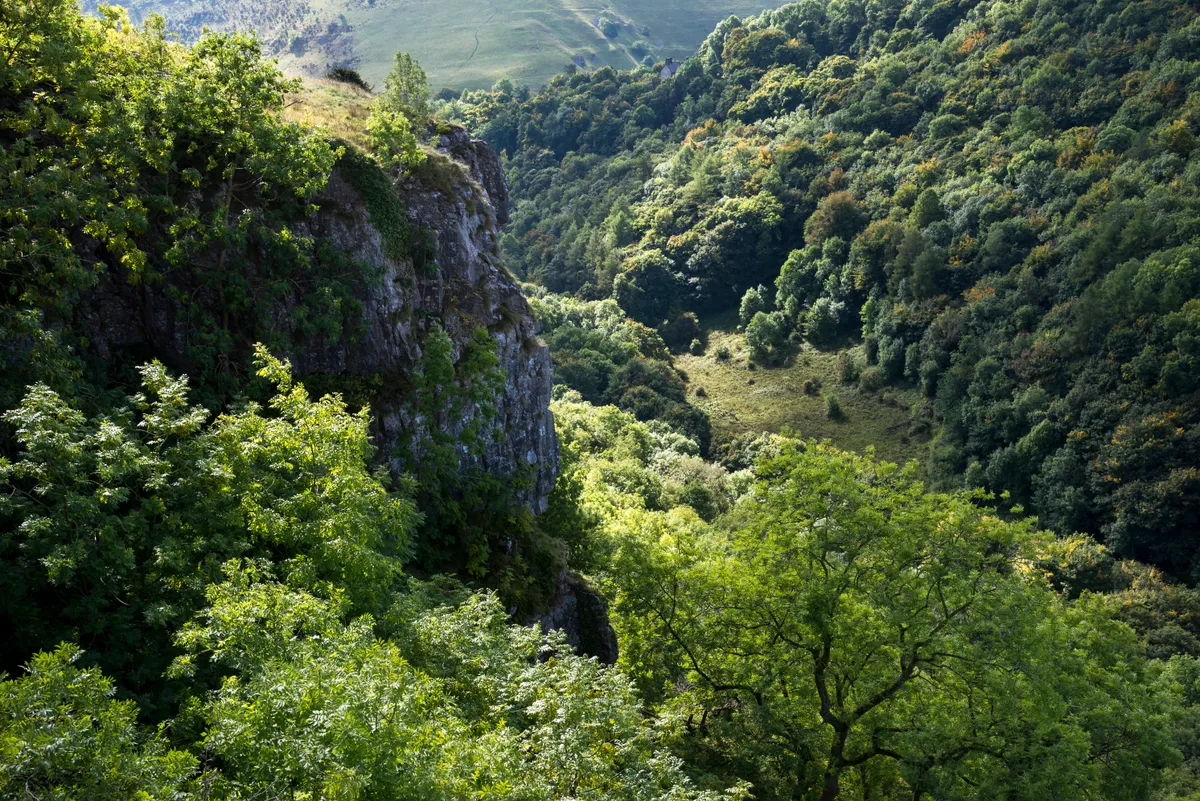
Above Cressbrook Dale, and on Wardlow Hay Cop, diverse grasslands are stitched with wildflowers.
Cressbrook, one of five dales making up the Derbyshire Dales National Nature Reserve, is a treasure trove of rare plants along with the more common rockrose splashing sunshine across the dale-side.
From here climb the meadow of Wardlow Hay Cop before continuing on to Monsal Head with iconic views over the Wye. Complete the flower-filled five-mile ramble via the Monsal Trail.
Padley Gorge
2.3 miles/3.7km | 1.5 hours | moderate
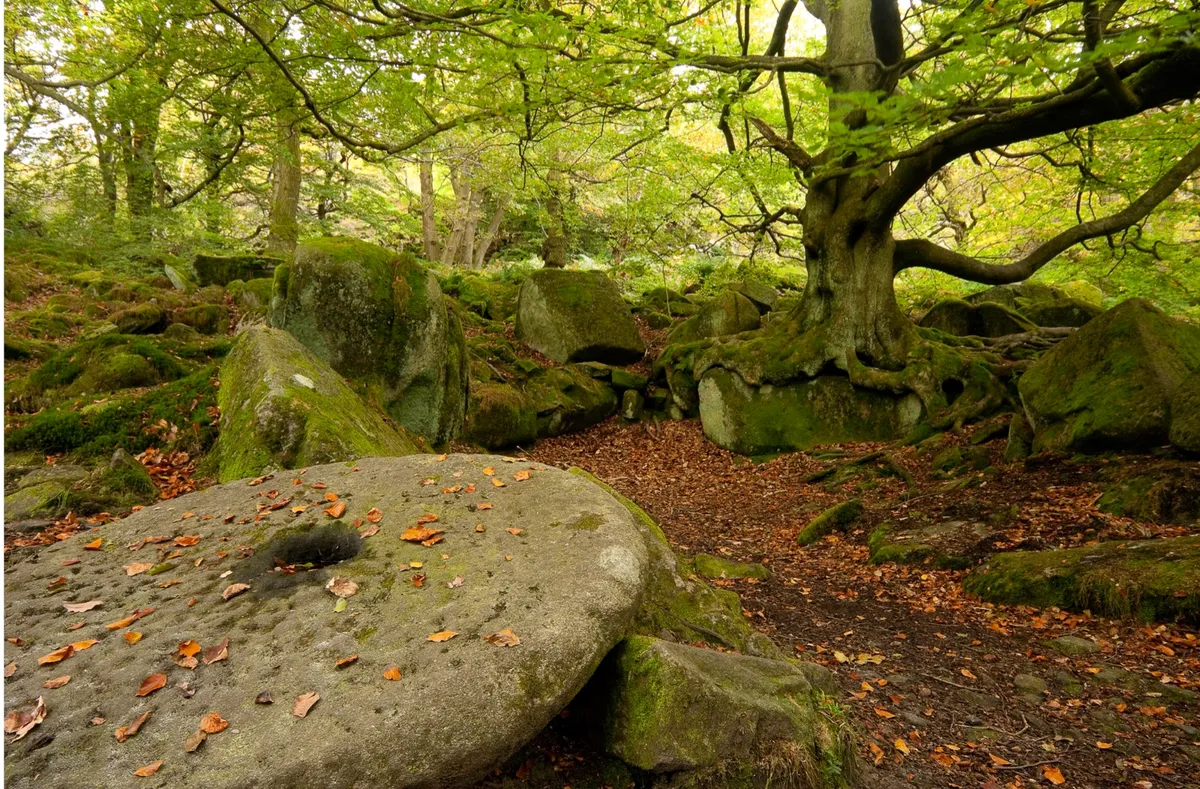
The River Derwent arcs through the eastern Peak District in a wooded vale with looming moorland shoulders. Tributaries tumble from the tops, foaming amid wizened woodlands little-changed in centuries.
Padley Gorge has the best of these, draining Burbage Moor to the Derwent at Grindleford. An enchanting stroll explores this chasm, pausing midway along to route at a cosy inn, before looping up through woodland-shrouded industrial heritage.
Tideswell and Monk's Dale
6 miles/9.7km | 3.5 hours | moderate
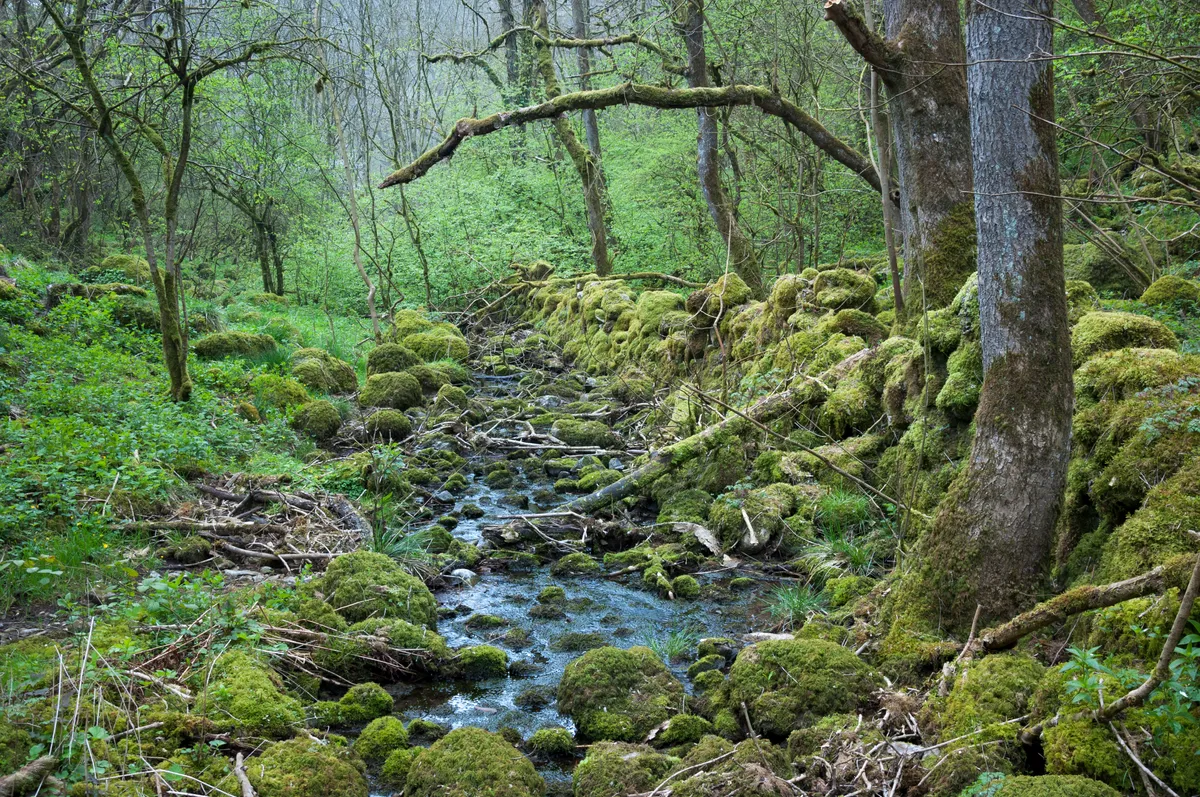
The church in Tideswell is renowned for its intricate wood carvings by local family the Hunstones, and the finest collection of medieval brasses in the Peak.
Although St John’s may not have the dimensions of a cathedral, locals will tell you that if you measure the length of its outside walls it would reach a mile. It was built on the profit gained from wool and minerals, and our six-mile wander into the depths of Miller’s Dale and Monk’s Dale will take us into the scenery on which Tideswell’s wealth was won.
Linacre Reservoirs
5.3 miles/8.5 km | 3 hours | moderate
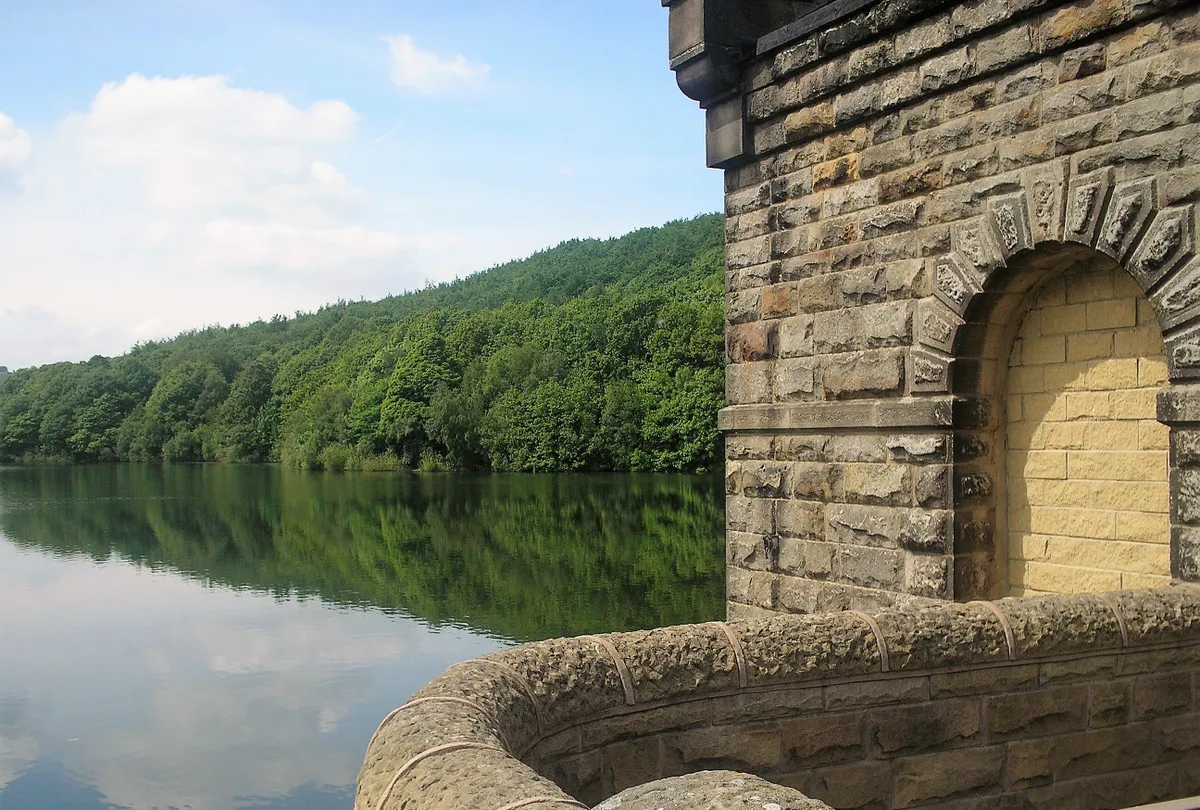
From the ponds of Holmebrook Valley Park to the three watery expanses of Linacre Reservoirs via Linacre Brook, this wetland landscape is home to an array of waterfowl. Surrounding Linacre Brook and Reservoirs, woodland birds inhabit the sycamore, beech, oak, ash, larch, pine and spruce.
Take your binoculars to enjoy the resident or winter-residing birds: you may spot mandarin ducks, goosanders, mallards and teal. Black-headed gulls, moorhens, coots and grey herons also take to the water. In the surrounding woodlands, nuthatches, jays and all manner of tits reside. If you’re lucky, you might spot a treecreepers, tawny owls, woodpeckers or even a kingfisher.
There are plenty of viewing points and picnic tables along the way. Settle down with a hot drink and watch the show.
Monsal Dale
4.5 miles | 2.5 hours | moderate

This walk through Monsal Dale takes you through the River Wye's twisting, wooded gorge, deep in the White Peak where, in autumn, woodlands cover the deep slopes in golden tints. Relics of the area's industrial heritage enhance your experience of an already dramatic landscape.
This walks starts and finishes on the edge of Little Longstone where walkers can refuel with drinks and food at one of two delightful pubs – The Monsal Head Hotel and the Packhorse Inn.
Birchover
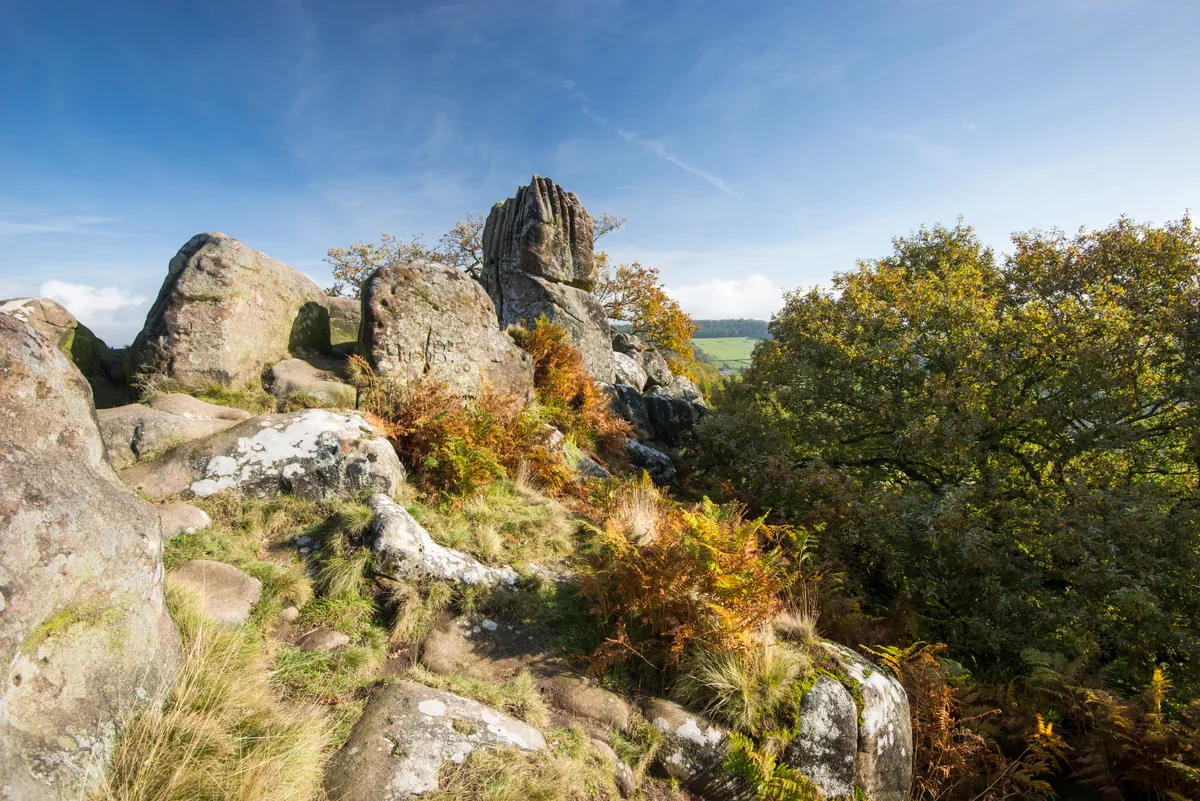
Surrounding the Peak District village of Birchover is a haunting landscape of gritstone bluffs, standing stones, burial mounds and Bronze-Age stone circles, hidden in inky woodland or exposed on windswept upland.
The paths here are littered with the history and mythology of the south-east Peak, from the hermit of Cratcliffe Tor who led travellers to safety off the ancient Portway trail, to the notorious outlaw who leapt across the soaring pillars that straddled Robin Hood’s Stride. Rowtor Rocks tells a story of prehistoric rock art and Victorian sculpture, while Stanton Moor reveals 4,000 years of human activity. Discover some of the best on this prehistoric landscape with our five-mile walk.
Chee Dale, Miller’s Dale and Wye Dale
4.2 miles/6.8km | 3 hours | moderate
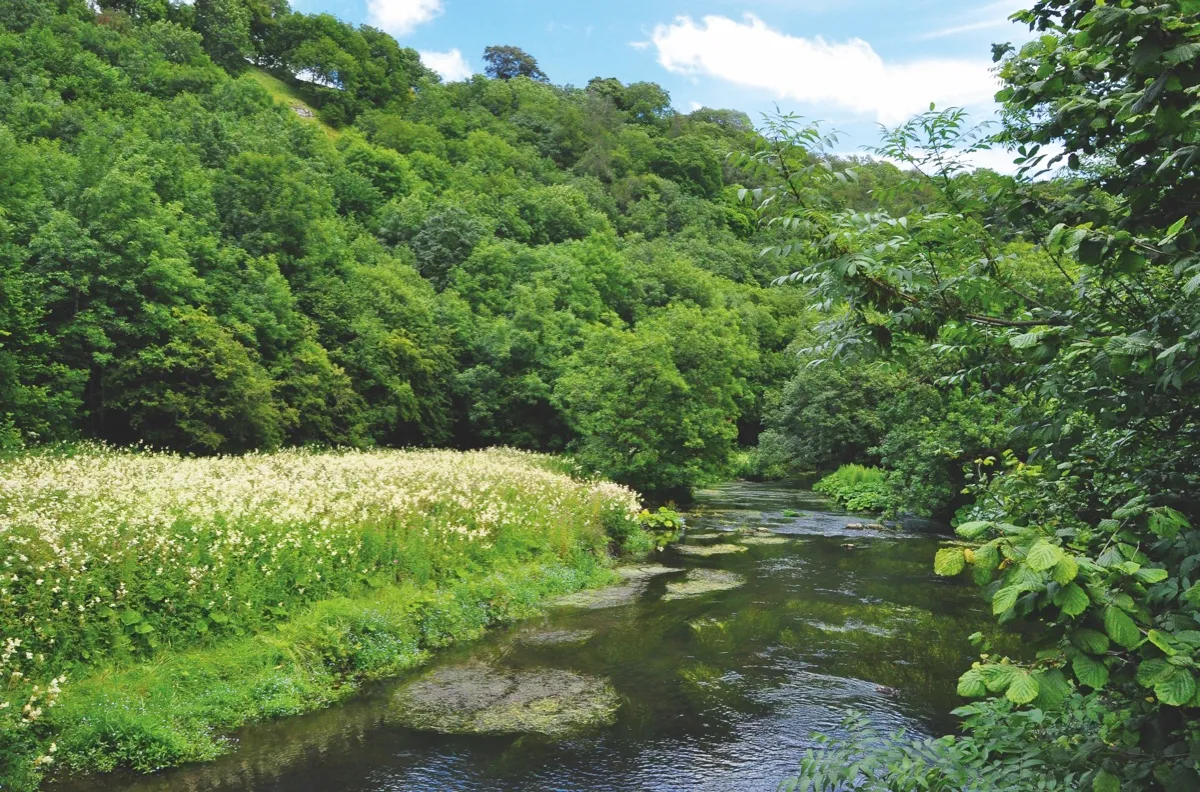
Deep in the White Peak east of Buxton is a captivating area of countryside; a union of natural bounty and majestic engineering that together create a truly astounding landscape.
Although it may have its challenges, this four-mile loop walk along the River Wye in the Peak District takes you through deep gorges and lush forests. It is readily accessible to all with a measure of agility and a sense of adventure.
Castleton
4.6 miles/7.5km | 3 hours | moderate–challenging
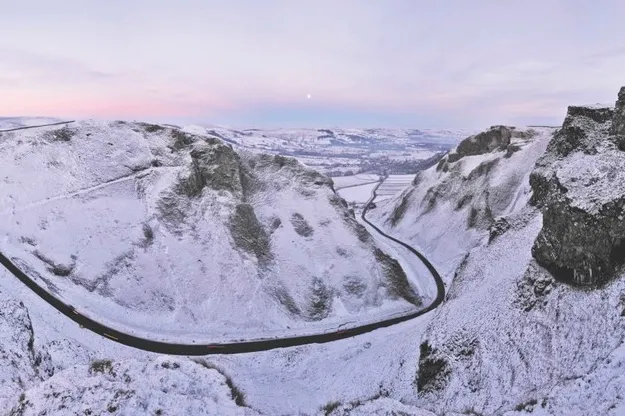
Peak Cavern is one of the Seven Wonders of the Peak District, and was long thought to be an entrance to Hell – the river that flows through it is still known to cavers as the Styx. For 400 years, a small community of rope-makers lived within its huge entrance – it became known as “a village that never saw the sun”.
These days, the planned medieval township of Castleton is famous not only for its caves but also for the 12th-century keep of Peveril Castle that looms over the village.
Explore the caves, crags and castle of this Peak District village with an easy, four-mile circular walk.
Mam Tor
8.7 miles/14km | 5–6 hours | challenging
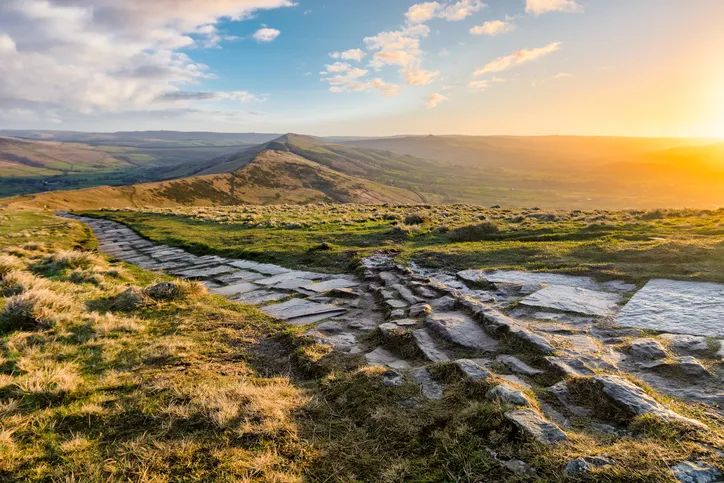
Pack hiking boots and crackers for a stay at a pub in the village of Hope where cheese once passed as currency, then walk off your lunch with a stroll up one of the Peak District’s best-loved hills.
Three Shires Head, Derbyshire, Staffordshire
6.2 miles/10km | 4 hours | moderate

In England there are an astonishing 68 county tripoints, but perhaps none as lovely as Three Shires Head where Staffordshire, Derbyshire and Cheshire converge in an isolated Peak District valley.
Here, two bridges span the meeting of waters, a duo of waterfalls cascading over rocks to gather in mountain-cold plunge pools. Hikers, photographers and wild swimmers are all drawn to this beauty spot, so it’s best to come early in the day. Enjoy an invigorating swim, a hot drink and the first rays of the summer sun before continuing on your figure-of-eight hike.
Hathersage
6.8 miles/11km | 4 hours | moderate-challenging
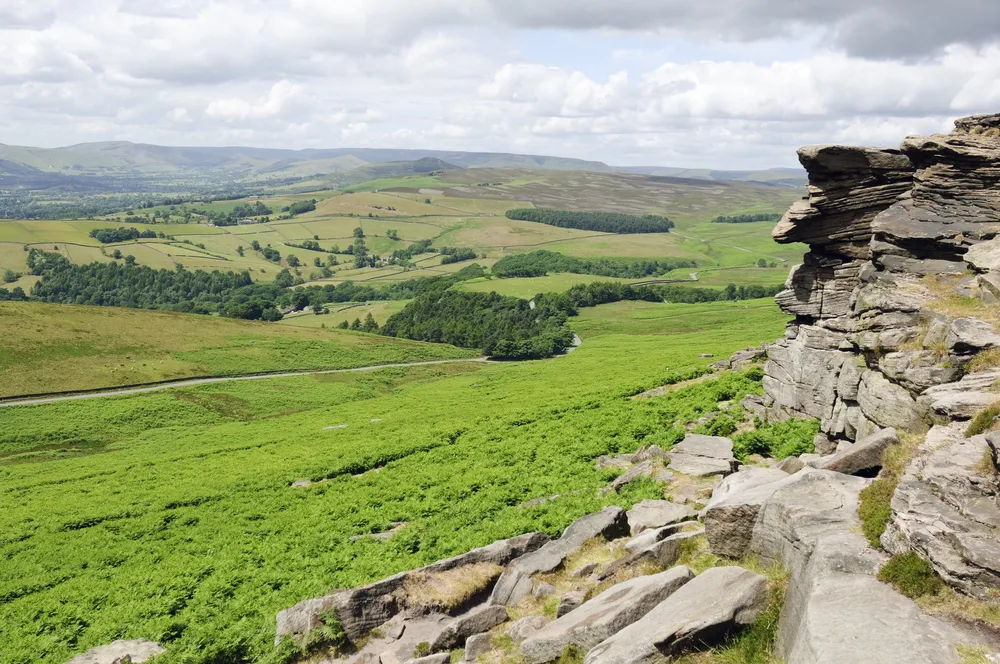
Charlotte Brontë is believed to have used the Peak District as the setting for her classic novel after a visit to Hathersage in 1845.
The BBC’s acclaimed 2006 dramatisation featured Ruth Wilson as the eponymous Jane Eyre, the orphan girl who, against all the odds, forges a relationship with tormented hero Edward Rochester.
Filming took place at Bolsover Castle and Haddon Hall, while many of the stunning outdoor scenes were shot on Stanage Edge, the four-mile long gritstone escarpment above Hathersage, better known for its climbing.
Chrome Hill
5.4 miles/8.7km | 3.5 hours | moderate–challenging
[image id="20334" size="landscape_thumbnail" align="none"] A walker at Parkhouse Hill and Chrome Hill, White Peak, Derbyshire, England/Credit: GettyA quirk of geology has produced a strand of sharp limestone hills which erupt like a string of vertiginous miniature mountains from the haymeadows and soft pastures of the higher Dove Valley, near Buxton.
The Dragon’s Back range are often cited as the only true peaks in the Peak District; a line of pinnacles said to resemble the ‘plates’ along the spine of a stegosaurus dinosaur.
The walker’s reward is ending up at Earl Sterndale’s pub, the cosy Quiet Woman, a wonderful hark-back to the village pubs of yesteryear. Discover the spectacular Dragon's Back with this 6.5-mile hill walk.
Derwent Valley
5.8 miles/9.3km | 3.5 hours | moderate
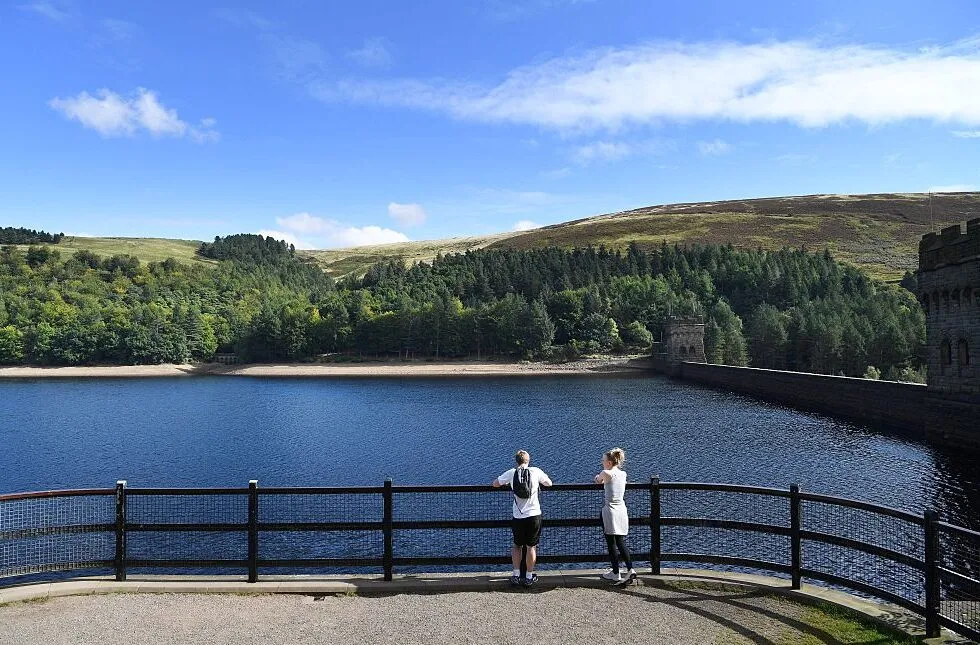
The famous 1955 film of The Dam Busters, starring Richard Todd as Wing Commander Guy Gibson, VC, was filmed in the Derwent Water valley. There have also been several anniversary flights by the last flying Lancasters over the dams, with the Merlin-engined bombers swooping low over the reservoirs and slipping between the towers of the Derwent Dam. A memorial stone to the crews of 617 Squadron was unveiled on the west tower of the Derwent Dam in 1988.
Get a taste of the Dambusters’ practice ground with an easy six-mile walk above and round the Derwent Reservoir, with glimpses of the still waters that once echoed to the throb of the low-flying Lancs.

